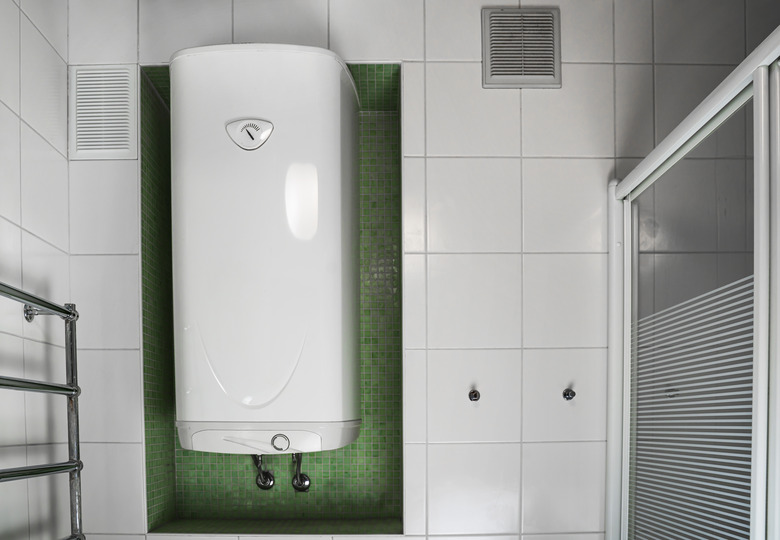How Do Dual Element Water Heaters Work?
We may receive a commission on purchases made from links.
Electric water heaters are a more modern alternative to the traditional gas-powered heater design. Whereas gas heaters heat water with a burner that produces a flame, electric heaters use electricity to heat an element. Manufacturers make electric heaters with either one or two elements.
With two-element designs, one element heats the water at the top of the tank while the second element heats the water in the bottom of the tank. Electric heaters feature fewer parts than gas models, but a basic understanding of how two-element models function can reduce the time needed to diagnose a problem.
Tip
If the tank water is cold, the top element of a dual-element water heater turns on, runs until the water in the top half of the tank is hot, and then shuts off. At this point, the bottom element takes over and heats the rest of the water.
The Upper Element
The Upper Element
When you turn on a hot water faucet, hot water flows out of the heater's tank through a supply line at the top of the tank. The tank draws in cold water through a second supply line also located at the top of the tank. The cold water is directed to the bottom of the tank through a supply line called a dip tube. As the hot water exits the tank, the cold water level gradually rises. Once the cold water reaches the upper heating element it triggers the element's thermostat. The thermostat directs an electrical current to the element, which then heats the water at the top of the tank.
The Lower Element
The Lower Element
Once the upper heating element warms the water within the upper half of the tank, the thermostat that controls it turns it off. Like the upper element, the lower element is also controlled by an individual thermostat. This thermostat senses when the upper element has turned off and activates the lower element to warm the water in the bottom of the tank. Once the water in the bottom of the tank reaches the temperature specified by the thermostat, the lower element turns off.
Water Heater Safety Features
Water Heater Safety Features
As with gas water heaters, dual-element electric water heaters feature a number of safety devices. If the water within the tank reaches a dangerously high level, a switch called a "high-limit" switch will automatically cut the power to both elements. If the high-limit switch fails to activate, a pressure relief valve typically located against the side of the tank will open and release water from the tank to prevent it from exploding.
Like their gas-powered counterparts, dual-element heaters also feature a drain cock at the bottom of the tank to flush the tank of sediments and an anode rod that slowly corrodes over time to prolong the lifespan of the tank by filling small rust spots that develop along the interior walls of the tank.
Troubleshooting Common Problems
Troubleshooting Common Problems
If the heater no longer provides hot water, first check the home's breaker box for a tripped breaker. If the breakers are all on, you may have to reset the heater's thermostat. Only the thermostat that controls the upper element features a reset button. Press the button; then wait about 10 minutes for the water to warm.
If the problem continues, the heater likely has a defective thermostat or heating element. If the heater produces a small quantity of hot water, check the lower thermostat and heating element. Test the thermostat with a voltmeter and replace it if you don't detect any voltage. If you detect voltage, replace the heating element.
